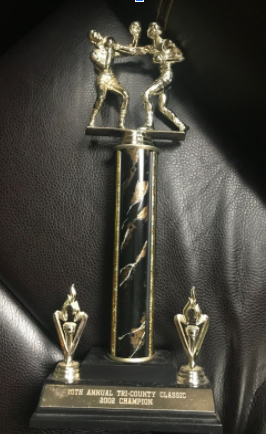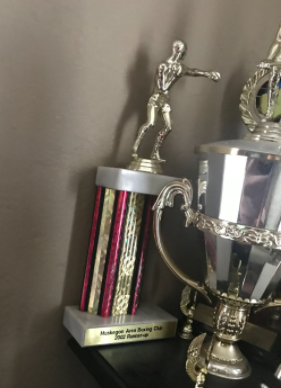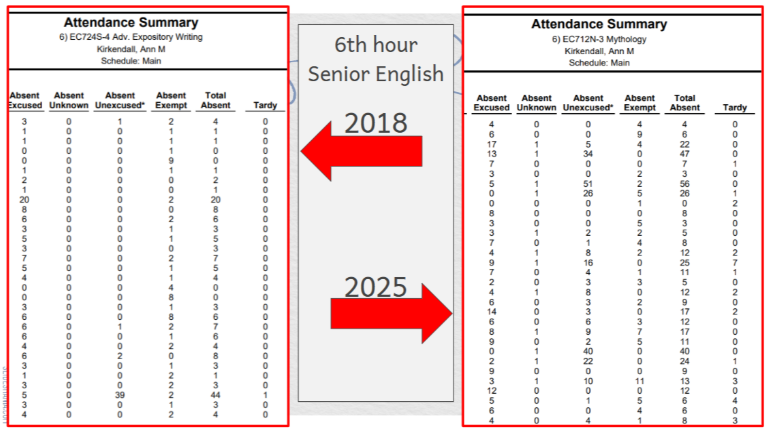Boxing is in his soul

November 23, 2021
Ding, Ding Ten seconds left for the round to finish. Cristino Loyola looking at his opponent in front of him. His legs feeling weak, moving to the left, moving to the right yet all the while still pushing forward. Arms sore and heavy, keeping them up to protect his head, still pushing forward. Body beat in, bruised up, still moving forward. Blood on arms, legs, chest, but still pushing forward. All the pain rushing through his body, yet he smiles, enjoying the sport, the sport of boxing. Boxers experience a lot of pain through boxing, but they have a massive love for the sport. One of those boxers was my uncle, Cristino Loyola.
With fighters like Marco Antonio Barrera, Erik Morales, Jose Luis Castillo, Felix Trinidad, Juan Manuel Marquez and Julio Cesar Chavez, it was hard to grow up and not like the sport. But to partake in it was an uncommon experience. That experience started at Tulip City Boxing Gym for Cristiano Loyola. Tulip City Boxing Gym was under a church basement but later would be taken over by Hope College. Boxing gyms had something special. There were all sorts of people from kids, teens and adults training for one sport.
“The gym had an open door policy. So when people walk in and you wanna train, all you gotta do is respect the rules, respect everybody and do the training,” Loyola said.
In a sport where the opponent’s aim is to beat the person in front of them down mentally and physically, training before a fight has to be rough. Although training and boxing can be tough, Loyola described it as great. The training comprised a lot of cardio work, like skipping rope and jogging. He also did sparring where he was constantly told to protect himself at all times. Loyola learned how to move around, cut the ring off, and how to stay away from the center line. All of the basic training was taught to him in three months.
“There was a lot of cardio work. You have to build a lot of stamina. If you think three rounds in amateur fights are gonna go real quick, once you put those gloves on and once you’re in the ring you’re using a lot of energy, trust me a lot. It’s not the same as hitting the bag–not even close.”
All the training alongside dieting led up to his first fight. Usually, in amateur fights, the coaches try to match their fighter with someone who’s similar. Same records, height, weight, etc. But for Loyola, that wasn’t the case. His first fight ended up against a Puerto Rican boxer who already had 10 fights. Stepping into the ring, Loyola was nervous, but he was excited to fight someone. There were many fans clapping and watching other fights but he felt like the attention was on him. Puerto Ricans in the crowd were cheering for Loyola’s opponent. Mexicans cheering for him. Nervous and anxious yet confident that his training would pay off, but he didn’t know that in boxing, one event can change the pace of the fight.
“I was nervous and anxious, but after the first punch, that all went away. I forgot about everything outside the ring. I was focused on the guy and the ring around him. I can still hear my coach in the ring, but I wasn’t listening. It’s not the same when you’re in the ring moving around and concentrating on the person in front of you, but once I sat down in the corner after the first round, that’s when I listened. He told me what I did wrong, what I gotta do, what the other guy was doing. I was doing well in the fight, but he caught me in the body and took the air out of me. He hit me in the body, cut my wind in half, so I just stepped back and told the referee that I’m done. I trained, but I didn’t train right.”
After losing his first fight, Loyola went back to training. Loyola started working on his cardio a lot more than he usually did. He started doing everything he practiced before, but he pressured himself to go past his limits. Loyola’s next fight wouldn’t be in three months but in the next month. Despite all the training he put himself through, his second fight wouldn’t go quite his way.
“Did you improve your stamina in the next fight?”.
“Oh yeah, for sure the rounds went by a lot better.”
“Did you win?”
“Nope. In the second fight, he hit me in the nose and I started to bleed, but the blood wasn’t going out of my nose, it was going back inside my throat. I was choking on my own blood. I noticed it right away. The blood got stuck in my throat. The fight only lasted two rounds.”
Despite Loyola’s amateur career not going as planned, his next bout went a lot better.
“The next fight I won. The guy was taller than me. I’m 5’5 but he was 5’9. He had a decent record, but I don’t remember what it exactly was. The guy was a southpaw so that added even more difficulty. In the first round, I forgot all about my training and he hit really hard. I kept on running into his power punches. I accidentally stepped on his foot a few times since it was my first time dealing with a southpaw. In between rounds one and two, my coach told me to stay on the inside, hit him in the body. The second round started, and I saw a punch coming and stepped on the inside and hit him in the body. Hit him 3 times in the body and once on the head. I kept on throwing punches left and right. I got him against the ropes and kept hitting the body. The ref saw he wasn’t protecting himself, so he walked in and ended the fight. I felt happy when the ref ended the fight. I wasn’t even tired, I felt like I could go 5 or 6 more rounds.”
After all the training Loyola put himself through, it finally paid off. He looked back at the mistakes in the first round and improved on them. Loyola’s family recorded the fight, and he decided to have a look at it to see the mistakes he made. In his next fight, he achieved something he wouldn’t have been able to do if he didn’t step up his training.
“One fight went to the judges. I won that one. Me and my opponent went toe to toe. It was the 3rd round, and we were both even, so we both knew whoever got the better punch would win the fight. We both stepped up to each other and went toe to toe for the rest of the fight.”
Loyola would later go into the golden gloves to be a runner-up from the westside. Loyola went on in his amateur career, losing and winning some fights. When training, Loyola met up with a professional boxer who lived in Holland: Johnny Garcia. Garcia at the time was rising up, but his career didn’t go well and ended with a record of 19 wins, 6 losses and 1 draw. During a tournament, Loyola’s friends would tell him Floyd Mayweather Sr was in the crowd watching fights. But he only noticed after his bout finished.
professional boxer who lived in Holland: Johnny Garcia. Garcia at the time was rising up, but his career didn’t go well and ended with a record of 19 wins, 6 losses and 1 draw. During a tournament, Loyola’s friends would tell him Floyd Mayweather Sr was in the crowd watching fights. But he only noticed after his bout finished.
Loyola continued boxing, winning some, losing some, but it didn’t matter to him. He enjoyed boxing. Losing would not ruin his passion. After his 9th bout, Loyola got into a car accident leading to a metal plate being placed in his arm and leg. Although injured, Loyola still trained; preparing for his next fight, regardless of the major injury.
“I got into a car accident when I was nineteen years old. Broke my right leg and my right arm. So I got metal plates in my arm and my leg. Didn’t matter, I always liked boxing. The thing was, every time I hit somebody, it hurt my arm. In my next fight, I threw a punch to his body, but when you throw a punch too far out, you end up hitting the elbow. So when I did that, he hit my plate and my arm went numb. My right hand was just completely dead. It didn’t respond. My opponent’s coach saw I dropped my right hand and told the guy that I dropped my right hand, and to jab at my head. I tried to throw combinations with one hand, but it just wasn’t working. My arm hurt for 3 days after that fight. I tried to keep training, but I couldn’t run anymore. My knee gave in with all the pounding it was taking during jogging. I tried to go on the speed bag but my arm didn’t have the mobility to do so.”
Loyola would have to stop training and end his amateur career. Cristiano Loyola ended with a record of 5 wins and 5 losses. Despite not having the cleanest record, Loyola’s passion for the sport is still with him. Loyola would inspire his niece to box. She would have a record of 3-0 but would stop due to school. Still, he watches fights and would tell me the little details the boxers do that show their game plan, he would get mad when new boxers get compared with old boxers, he would get excited when anyone asked him advice on how to move around the ring. Today Loyola still has a passion for boxing whether he’s watching or in the ring.
“Do you miss boxing?”
“Oh yea definitely.”



